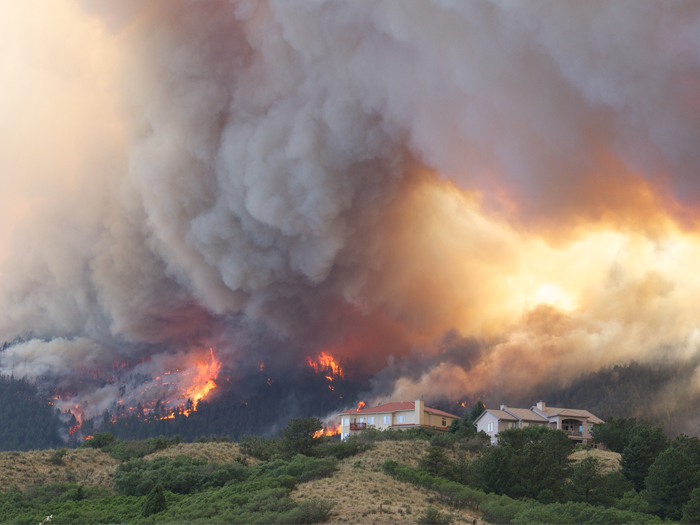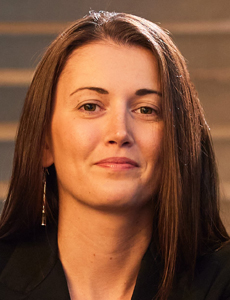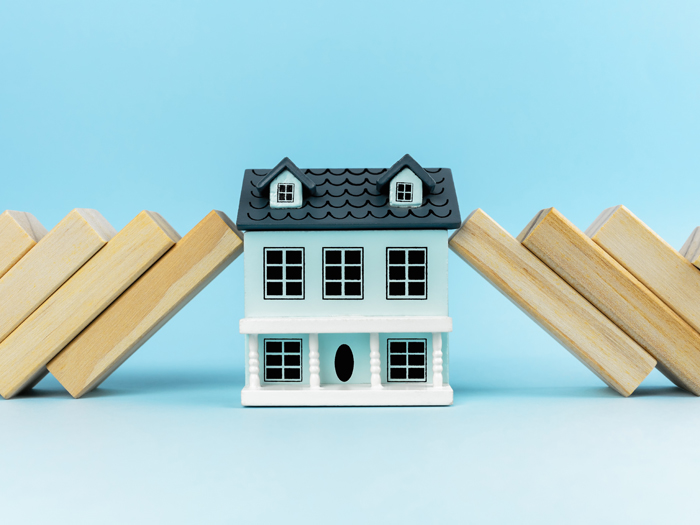Insuring the Climate Transition: As Capacity Wanes and Storms Batter the U.S., What’s the Future of the Property Insurance Market?

Kat Kraft remembers watching anxiously as wildfires engulfed the Denver suburbs last year.
Thick gray smoke clouds hung over the city as 6,000 acres burned and almost 1,000 homes were damaged.
Kat and her husband, Toby Kraft, own a home 20 minutes outside the city. They’re attracted to the area for many of the same reasons folks have been flocking to Colorado over the past decade: beautiful coniferous forests for hiking, easy access to skiing and gorgeous Rocky Mountain vistas. They loved their home, but the fires made them nervous.
So Kat did what she thought any responsible property owner would do. She called her insurance provider to increase their coverage in the event of a loss. The Krafts are cofounders of Teren, a climate resiliency data analytics startup that helps property owners understand and mitigate their risks. Kat serves as director of product strategy and Toby as CEO. They thought they understood how to protect their property.
But when Kat spoke with their carrier, they got surprising news. Their insurer was no longer writing wildfire coverage for new clients in the area. This isn’t just a problem for homeowners; over the past few years, commercial property insurance carriers have been pulling out of markets they deem uninsurable due to intense storm and wildfire risks. The only reason the Krafts had coverage at all is because their policy had been grandfathered in.
“If we go to sell our home, the next buyers would not be able to obtain homeowners insurance with our major carrier,” she said. “And I wouldn’t be surprised if many other major carriers also felt the same way.”
Property Markets Brace for the Future
Property insurance carriers have always adjusted their appetites after major storms, wildfires or catastrophes. After Hurricane Katrina, many in the industry reevaluated their appetite for risk in Louisiana, and insurers are doing the same thing today in the wake of Hurricane Ian.
The past few years have felt different for insureds, though. Year after year of increasingly frequent and strong hurricanes and wildfires, plus freak weather events like Texas’ Winter Storm Uri, have battered property insurers.

John Moran, CPCU, vice president QBE North America
“There’s a lot of uncertainty with climate change. Is this the new normal going forward?” said John Moran, CPCU, vice president at QBE North America. “If it is, the industry really needs to react, because it’s not pricing its products for repeated events year after year.”
Many carriers have increased rates and raised deductibles in an effort to remain profitable in the face of our shifting climate. Swiss Re estimates that property insurance rates could double by 2040 as a result.
Others are taking a different approach: pulling out of some markets entirely. Florida, California and other areas where natural disasters are common are seeing insurers withdraw from the market. Some carriers are even calling for a federal backstop program, such as the one that exists for man-made disasters under the Terrorism Risk and Insurance Act.
“We’re going to continue to see large insurance companies pull out of regions that are showing a tendency to have more and more storms,” said Arianna Armelli, founder and CEO of the disaster recovery startup Dorothy.
“We’ve seen it in California because of the wildfires. We’ve seen it in Florida and across all the states that have frequent floods.”
In the Wake of Disaster, Fast Cash Is King
Armelli knows firsthand the havoc natural catastrophes can wreak on communities. Armelli, who grew up in the Bronx, remembers taking two trains and a bus to the Rockaways in Queens in 2012 to volunteer with cleanup efforts in the aftermath of Hurricane Sandy.
As she removed moldy drywall, she listened to people sharing their fears for their livelihoods. They’d lost homes and small businesses. Now, after charting a career in climate resiliency, she still hears these complaints from property owners: When a disaster occurs, they need cash to rebuild. And they need it fast.
“A lot of people, when they go through unexpected events, there’s unexpected expenses that come with it that they didn’t prepare for,” Armelli said.
Part of the reason so many property owners struggle after a loss is a sizable insurance gap. Last year, natural catastrophes resulted in $270 billion in economic losses, only $111 billion of which were covered by insurance, per Swiss Re’s report “Natural Catastrophes in 2021: The Floodgates Are Open.”
Even when a property owner has insurance, it might not be enough to cover the cost of repairs. As inflation soars, Moran says, he’s seen a lot of property owners struggle because their insurance policies haven’t properly valued their buildings.
“We found a lot of those properties were underinsured significantly,” Moran said. “Insurance agents might have established a cost per square foot of about $150 or $200 for repairs as sufficient at the time they wrote the policy, but rebuilding costs today may be more like $350.”
Some property owners have even turned to financial services products like loans when their insurance claim wasn’t approved or they didn’t receive the money quickly enough.

Arianna Armelli, founder and CEO of Dorothy
“I think what we will see is a push on the financial market to provide new and innovative financial products to people so that they can supplement what they weren’t getting paid from insurance,” Armelli said.
Still, the industry is trying to find ways to fill the gap and get property owners the money they need after a disaster. Parametric insurance products have stepped in to help property owners bounce back. These products pay out a specific amount if a particular type of weather event hits. Claims are triggered automatically, so companies can count on money quickly if a storm hits.
And underwriting for traditional property policies is improving too. Across the insurance and risk management industries, new tools that combine historical data with artificial intelligence are helping risk managers better assess their exposures, allowing underwriters better price insurance products. These products have enabled carriers to create new parametrics, which can help provide covers for additional types of storms.
“Historical risk assessments are very static in nature. They depend on the best available data sets around the marketplace,” Toby Kraft said.
“We’re in a rapidly changing risk environment, and because of that, I think that what technology is going to help us enable is more real-time decision-making when it comes to these risks.”
Where Does Good Old Risk Management Fit In?
While the property market corrects and prepares for a future of increasingly frequent and strong storms, insureds are looking for ways to reduce their exposures and make themselves more attractive to underwriters.
“Ten to 15 years ago, I think, a lot of property owners had this mindset of, ‘It’s like one out of 100 years where these events would take place, so maybe I don’t have to take any sort of precaution in terms of how I think about protecting my property,’ ” Armelli said. “We’re definitely starting to see a little bit of a shift in mindset.”
Shoring up building defenses so they can withstand the strong winds and harsh rains that come with many severe weather events is one area where insureds have found success. That means “upgrading roofs and upgrading windows so the building performs better in a storm event,” Moran said.
For wildfires, assessing whether you can reduce the amount of green space around your property can help prevent it from catching fire. Toby and Kat Kraft have seen this work effectively through their work with Teren.
“There are a lot of things that you can do to mitigate wildfire risk on the property,” Toby Kraft said.
“Wildfire risk can be reduced by about 30 to 35%, if defensible space is developed around that property,” Kat Kraft added. “Even if a wildfire occurs in the area, the ability to defend the structure is greatly improved by following defensible space guidelines.”
Some property owners are hesitant, however. They want insurers to quantify what kind of return on investment these efforts have when it comes to reducing their insurance premiums. Carriers and brokers should work to educate their insureds on the financial benefits of protecting their buildings.
“There’s a push from the consumer side to understand how making investments into their property to make it more sustainable affects their insurance premium,” Armelli said. &










